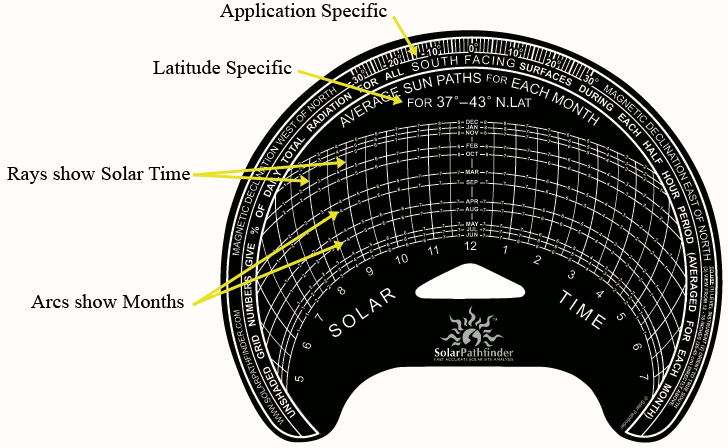8 Essential Tools for Solar Technicians
The solar industry is burgeoning at an unprecedented pace, with global solar capacity expected to more than double in the next five years. As this expansion continues, the demand for skilled solar technicians has become higher than ever. In order to match this rapid growth, Solar technicians rely on a variety of specialized tools to ensure the efficient and safe installation of solar systems. In this blog, we will go through 8 essential tools for Solar Technicians, diving into their specificities as well as what makes them such valuable assets in the solar industry.
1. Multimeter
A multimeter is an indispensable tool for any solar technician. Designed to measure voltage, current, and resistance in electrical circuits, multimeters typically feature a digital/analog display, test leads, and a dial to select different measurement modes. Key specifications include high accuracy, auto-ranging capabilities, and the ability to measure both AC and DC currents. Some advanced models also come with additional features like temperature measurement and data logging.
Using a multimeter is simple, but it is important to ensure it is set to the correct mode for the measurement. Luckily the Jonard multimeter is capable of gauging both the required range and the required function based on the test lead input, making things much easier for the user. For measuring voltage, turn the dial to the appropriate voltage setting, then connect the test leads to the circuit. The red lead connects to the positive terminal, and the black lead connects to the negative terminal. The value is then displayed on the screen. For current measurement, the multimeter is connected in series with the circuit. When measuring resistance, ensure the power is off before connecting the leads. Always follow safety protocols to prevent electrical shock or damage to the device.
A multimeter is crucial for solar technicians because it allows them to diagnose and troubleshoot electrical issues within the solar system. Accurate measurements of voltage, current, and resistance ensure that all components are functioning correctly and safely. This tool helps prevent potential failures and improves the efficiency and reliability of solar installations, ultimately contributing to the system’s overall performance and longevity.
2. Solar Pathfinder or Sun Eye

The Solar Pathfinder/Sun Eye is a critical tool for assessing the optimal placement of solar panels. These devices analyze shading patterns and sun exposure throughout the year, providing a detailed report on potential energy production. The Solar Pathfinder uses a reflective dome to capture shading data, while the Sun Eye employs a digital camera and software to create a 3D model of the site. Both tools offer essential data that helps in designing efficient solar energy systems.
To use the Solar Pathfinder, position it at the planned location of the solar array. Align the device according to its built-in compass and level it using the adjustable legs. Once in place, capture the shading data by taking a photo of the reflective dome. The accompanying software will analyze the image and provide detailed reports. For the Sun Eye, position the device similarly, take a panoramic image, and let the software process the data. These tools help technicians make informed decisions about panel placement to maximize solar energy harvest.
Both of these tools are essential for maximizing the efficiency of solar panel installations. Proper placement of solar panels is crucial to harnessing the maximum amount of sunlight and avoiding shaded areas that can reduce energy production. By accurately assessing shading and sun exposure, these tools help technicians design systems that achieve optimal performance, ensuring that clients get the best return on their investment in solar technology.
3. MC4 Crimping Tool
An MC4 crimping tool is essential for creating secure and reliable connections in solar panel installations. MC4 connectors are the industry standard for photovoltaic (PV) systems, known for their robustness and ease of use. The crimping tool is specifically designed to handle these connectors, ensuring that the cables are firmly attached and weatherproof.
In order to use the MC4 crimping tool, you must start by stripping the end of the cable to expose the conductor. Next, insert the stripped wire into the MC4 connector, ensuring that the conductor is fully seated. Afterwards, place the connector into the crimping tool and squeeze the handles until the connector is securely attached to the cable. Finally, it's important to verify the connection by giving it a gentle tug. A properly crimped MC4 connector will have no exposed conductor and will be ready for a waterproof seal.
MC4 crimping tools are vital for ensuring the durability and reliability of electrical connections in solar systems. Poorly crimped connections can lead to electrical failures, increased resistance, and potential safety hazards. By providing secure and weatherproof connections, the MC4 crimping tool helps maintain the integrity of the solar installation, ensuring consistent performance and longevity.
4. Torque Wrench
A torque wrench is a precision tool used to apply a specific torque to bolts and nuts, ensuring they are neither too tight nor too loose. This is crucial in solar installations where the structural integrity and electrical connections must meet stringent specifications. Torque wrenches come in various types, including beam, click, and digital, each offering different levels of precision and ease of use.
Using a torque wrench involves setting the desired torque value according to the manufacturer’s specifications. For a click-type torque wrench, adjust the handle to the required torque setting. Place the wrench on the bolt or nut and tighten it until you hear a click, indicating that the desired torque has been reached. For digital torque wrenches, set the value on the digital display, and the tool will alert you when the target torque is achieved. Always double-check the settings and ensure the wrench is calibrated for accurate results.
A torque wrench is crucial for ensuring that all mechanical connections in a solar installation are properly secured. Over-tightening can damage components, while under-tightening can lead to loose connections and potential failures. By applying the correct torque, technicians ensure the safety, reliability, and longevity of the solar installation, preventing costly repairs and maintaining optimal performance.
5. Solar Clamp Meter
A solar clamp meter is an essential tool designed specifically for measuring the current flowing through solar PV systems without having to disconnect the circuit. It features clamp jaws that open to encircle a conductor and measure current using electromagnetic induction. These meters often include functions for measuring voltage, resistance, and continuity, making them versatile tools for solar technicians.
To use a solar clamp meter, simply open the jaws of the clamp and place them around the conductor you wish to measure. Ensure the meter is set to the correct mode for current measurement. The meter will display the current flowing through the conductor without needing to break the circuit. For measuring voltage or resistance, use the test leads provided, while ensuring the meter is set to the appropriate mode. This tool simplifies the process of monitoring and troubleshooting solar installations, enhancing safety and efficiency.
The solar clamp meter is vital for quickly and safely measuring the current in live circuits, which is crucial for diagnosing and troubleshooting issues in solar installations. It eliminates the need to disconnect circuits, reducing downtime and improving efficiency. By providing accurate measurements, the solar clamp meter helps ensure the optimal performance and safety of the solar system, making it an indispensable tool for solar technicians.
6. Heavy Duty Wire Stripping Pliers
Heavy duty wire stripping pliers are essential for removing insulation from electrical wires without damaging the conductor inside. These pliers typically feature ergonomic handles for comfort, adjustable stripping gauges, and a cutting blade for additional versatility. They are designed to handle a variety of wire sizes and types, making them indispensable in the toolkit of a solar technician.
To use heavy duty wire stripping pliers, you must first select the appropriate gauge for the wire you are working with. Then, you can place the wire in the designated slot and squeeze the handles to remove the insulation. The built-in cutter can be used to trim wires to the desired length. Proper use of these pliers ensures clean, precise stripping, which is critical for making secure electrical connections.
Wire stripping pliers are crucial for preparing wires for connections in solar installations. Clean, precise stripping prevents damage to the conductor, ensuring optimal electrical flow and reducing the risk of connection failures. These pliers enhance efficiency by simplifying the stripping process, allowing technicians to work more quickly and accurately.
7. Heavy Duty Utility Knife
A heavy duty utility knife is a versatile tool used for cutting various materials such as insulation, cables, and other components encountered in solar installations. These knives feature retractable blades, ergonomic handles, and replaceable blades for extended use. The robust construction ensures they can handle tough materials without breaking or dulling quickly.
Using a heavy duty utility knife is self explanatory. Once you extend the blade to the desired length and secure it in place, you can hold the knife firmly and use a steady, controlled motion to make cuts. Always cut away from your body and use a cutting mat or surface to protect underlying materials. Also, it's important to regularly replace the blade to maintain cutting efficiency and safety.
A utility knife is essential for making precise cuts in various materials, which is a frequent requirement in solar installations. Whether trimming insulation or cutting cables to length, a sharp and reliable utility knife ensures clean cuts and reduces the risk of damage to components. This tool enhances productivity by providing a quick and efficient means of cutting materials.
8. Screwdrivers
Last, but certainly not least, Screwdrivers are fundamental tools for assembling and disassembling components in solar installations. A good set of screwdrivers includes various types and sizes, such as flathead, Phillips, and Torx. Ergonomic handles and magnetic tips enhance usability and precision, making them a staple in any technician’s toolkit.
To use a screwdriver, select the appropriate type and size for the screw you are working with. Insert the tip into the screw head and apply steady pressure while turning the handle to tighten or loosen the screw. Magnetic tips can help hold screws in place, especially in tight or awkward positions.
Screwdrivers are crucial for securing panels, mounting hardware, and connecting electrical components. The right screwdriver ensures that screws are properly tightened or loosened without stripping the heads or damaging the surrounding material. This tool is indispensable for maintaining the integrity and safety of solar installations.
Conclusion
Having the right tools is crucial for any solar technician to execute their tasks efficiently and safely. Fortunately, Jonard Tools has developed the perfect Solar Essentials Kit, which includes many of the indispensable tools needed for solar installation and maintenance. With this comprehensive kit and a mastery of these tools, solar technicians can deliver the highest level of service and expertise, ensuring successful and reliable solar system installations every time.

Comments
Login or Register to post comments.